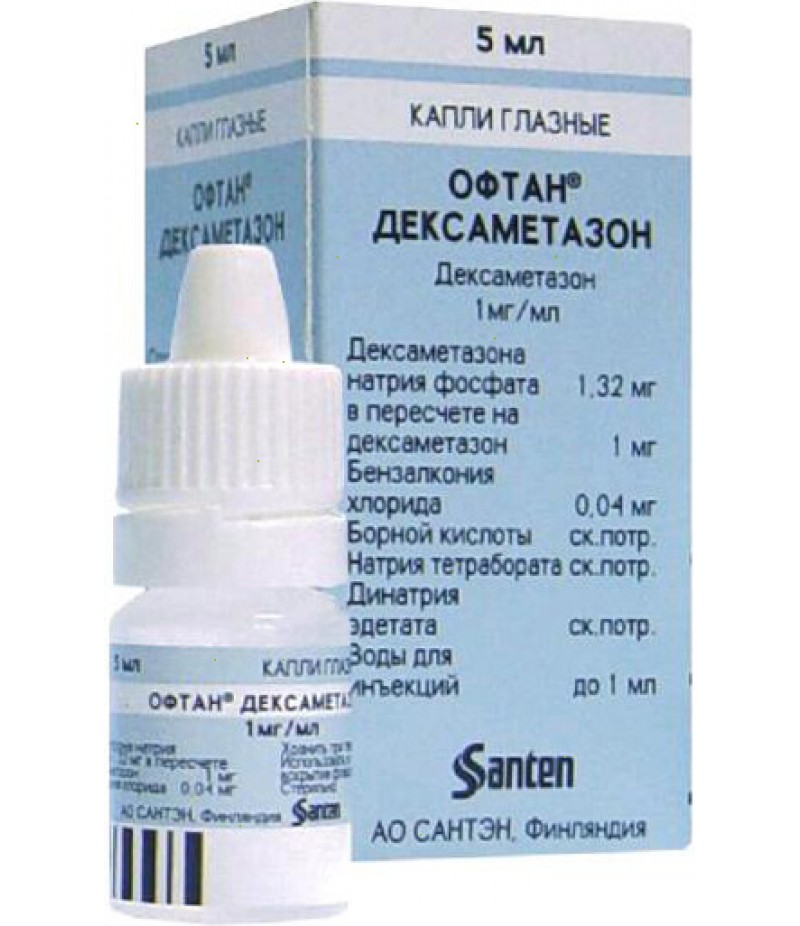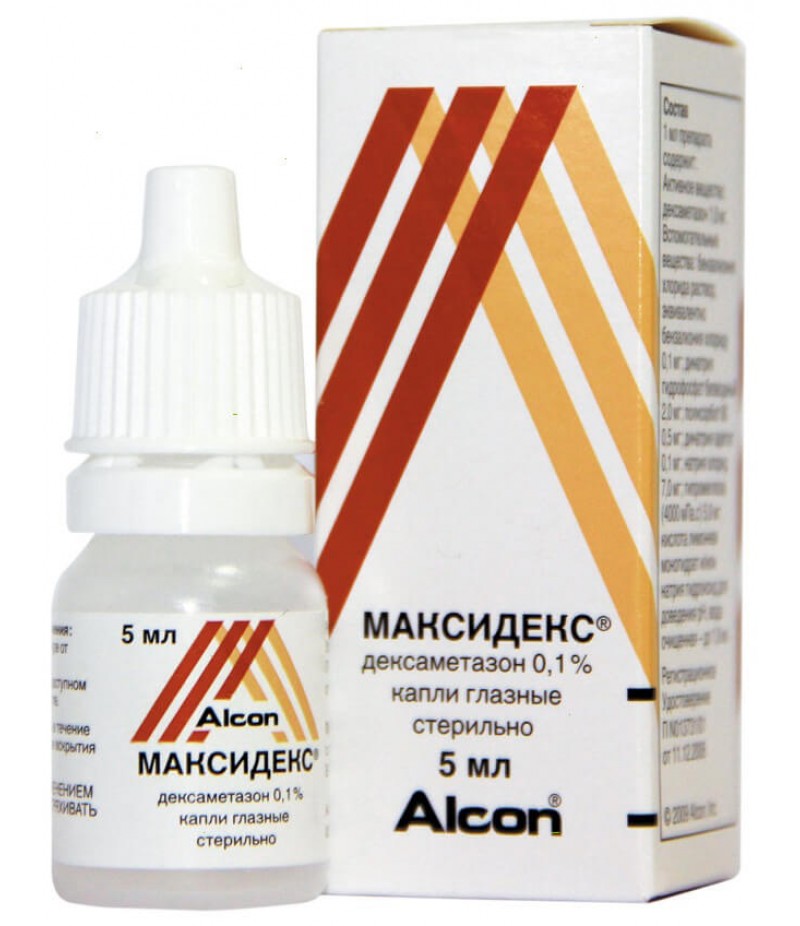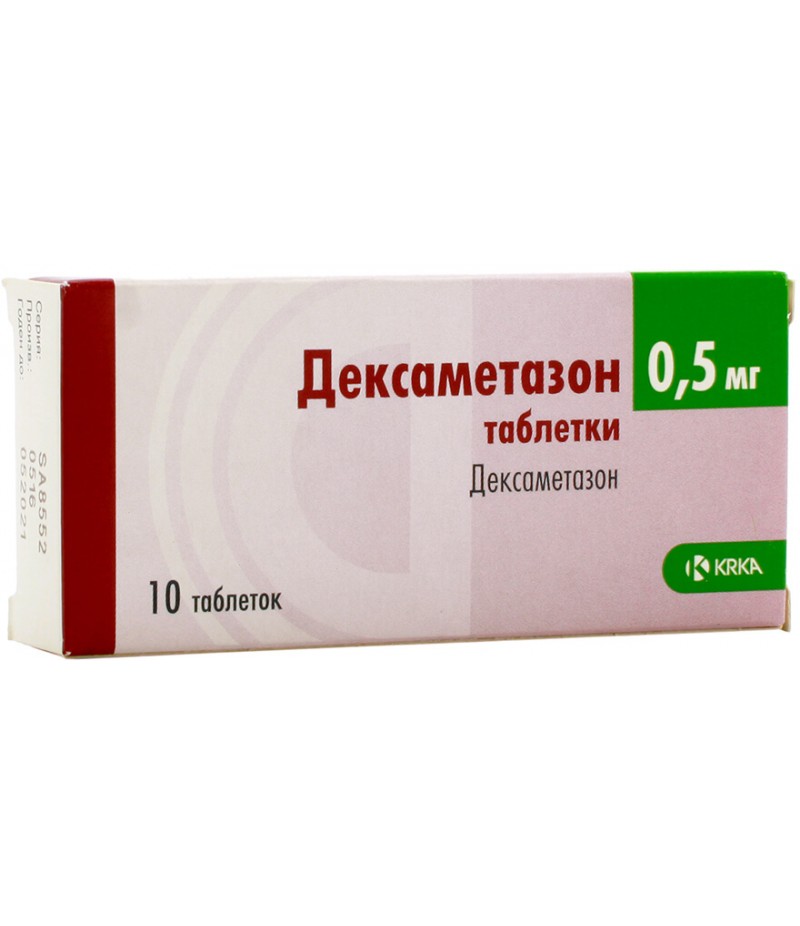Oftan Dexamethason 0.1% 5ml
- $13.93
- 3 or more $13.60
- Availability:In Stock
Instruction for Oftan DexamethasonYou can buy Oftan Dexamethason hereCompositionIn 1 ml of drops contains: 1 mg of dexamethasone + auxiliary elements (boric acid, disodium edetate, benzalkonium chlori
Tags: drops
Instruction for Oftan Dexamethason
You can buy Oftan Dexamethason here
Composition
In 1 ml of drops contains: 1 mg of dexamethasone + auxiliary elements (boric acid, disodium edetate, benzalkonium chloride, sodium tetraborate, water).
Form of issue
The medicine is produced in 5 ml polyethylene bottles. The drug is a clear liquid, without color and odor. In a cardboard bundle one bottle.
pharmachologic effect
Anti-allergic, anti-inflammatory.
Pharmacodynamics and pharmacokinetics
The active substance is a glucocorticosteroid. Its anti-inflammatory activity is due to the ability to inhibit the vital activity of adhesive endothelial molecules, cyclooxygenase 1 or 2, and the release of cytokines. As a result, the intensity of the formation of inflammatory mediators decreases, the adhesion of leukocytes to the vascular endothelium is inhibited, the mediators can not penetrate to the inflamed parts of the eye.
Pharmacokinetic parameters, in particular the maximum concentration and the period of excretion from the body, were observed in patients who had undergone the operation to remove cataracts. At the same time, the maximum concentration of the drug was achieved within 2 hours, and the elimination period was 3 hours.
Dexamethasone is metabolized in the body. About 60% of metabolites are excreted through the kidneys within 3-4 hours. Biological availability is 70%, the degree of binding of the active substance with proteins in the blood - up to 80%.
Indications for use
Eye drops Oftan Dexamethasone is prescribed:
for the treatment of acute and chronic inflammation of the eye (keratitis, conjunctivitis, blepharitis, scleritis, keratoconjunctivitis, episcleritis);
with uveitis of various origins, iritium, iridocyclitis;
with superficial injuries of the cornea of various origin;
with sympathetic ophthalmia, choroiditis, chorioretinitis;
for the treatment of ketatoconjunctivitis or allergic conjunctivitis;
as a prophylaxis and treatment of inflammation after surgery and trauma.
Contraindications
The agent is not prescribed:
children and adolescents;
when allergic to any of its components;
with tuberculosis of the eye;
for keratitis caused by a virus (eg, herpes);
for the treatment of other diseases of the cornea or conjunctiva, viral nature;
with damaged epithelium of the cornea, including after removal of a foreign body from it;
during acute purulent diseases of the eye;
with fungal or mycobacterial diseases of the eyes;
with epitheliopathy of the cornea;
if the patient has increased intraocular pressure;
with glaucoma.
Side effects
Benzalkonium chloride can cause eye irritation and may be an allergen.
Immediately after instillation, there may be a burning sensation or an allergic reaction.
Also possible:
the development of secondary glaucoma or cataract (caused by taking steroids);
the appearance of ulcers, clouding or thinning of the cornea;
occurrence in the eye (or spread) of herpes or bacterial infection.
Instructions for use (method and dosage)
The drug is administered subconjunctivally.
Before use, the vial should be shaken well.
Dosage and duration of treatment should be determined by the attending physician.
According to the instructions for Oftan Dexamethasone during an acute period, 1-2 drops are prescribed to the affected eye (s), every half hour or hour, then the drug is taken 1-2 drops every 2-4 hours. Dosage can be reduced to 1 drop, 3-4 times a day.
If no improvement occurs within 3-4 days, the diagnosis should be reviewed or the drug replaced.
During treatment, intraocular pressure should be monitored.
Adjusting the daily dosage for patients with liver or kidney disease due to low systemic absorption of the agent is not required.
Overdose
With the correct (local) application of the drug, the likelihood of an overdose is extremely low.
In very rare cases, eye irritation may occur.
In case of an overdose, rinse the eye with running water. There is no specific antidote, the therapy is symptomatic. If the symptoms recur, the drug should be discarded.
Interaction
Due to the fact that the drug is able to induce the isoenzyme CYP3A4, care must be taken when the drug is combined with CCB, erythromycin and quinidine.
The drug can enhance the effects of warfarin, phenytoin and barbiturates.
When taking other eye drops or ointments, you should do a 15-minute break between the application.
Storage conditions
In a place protected from unwanted penetration of children, at a temperature of 2 to 8 degrees.
Shelf life - 2 years. After the first use (dissection) - 30 days.
special instructions
The drug is intended for ophthalmic use only.
Corticosteroids are not recommended for more than 2 weeks, the risk of increased intraocular pressure, the development of glaucoma (with optic nerve damage), loss of visual acuity is increased. Damage to the surface of the cornea is slower, and the likelihood of developing viral or bacterial, fungal diseases is increasing.
During treatment, you should not wear contact lenses. At least, they should be removed before and put on after 15 minutes after instillation of funds in the eyes.
In pregnancy and lactation
It is not recommended to use drops with pregnant and lactating women.
Reviews
Reviews of eye drops of Oftan Dexamethasone is small, but of those that are available, most are good. The drug is often used to relieve inflammation when wearing conactile lenses, with conjunctivitis. The drug is quite effective and is inexpensive.



